Pied-billed Grebes are opportunistic feeders, taking large crustaceans (especially crayfish), fish, insects and other invertebrates. They also consume a lot of frogs when they’re available. When the prey is too large to swallow whole (frogs and crayfish especially) they grasp the appendages with their beak and shake it vigorously until the limbs break off. I’ve also seen adults tear off bits of the body trunk of frogs to feed to their chicks.
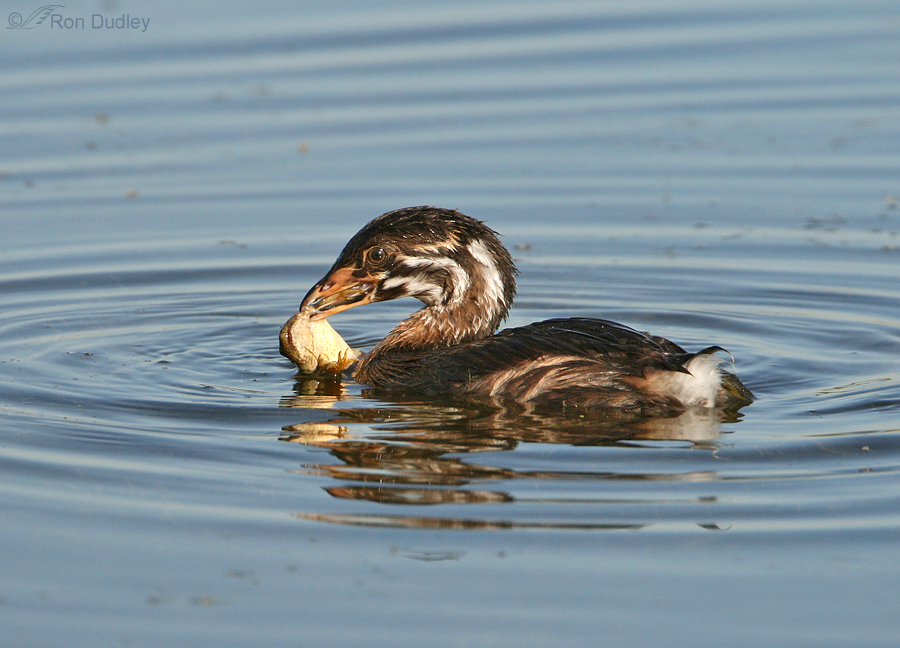
This bird is a juvenile, still learning the finer points of consuming prey. This stage of plumage development is referred to as the “stripe-head stage”, for obvious reasons. Adults lose those stripes. The frog it has captured is probably one of the first amphibians the bird has had to deal with without assistance from a parent and that inexperience seemed obvious as the young bird dealt with the frog.
I’ve presented all the photos in this series in the order they were taken.
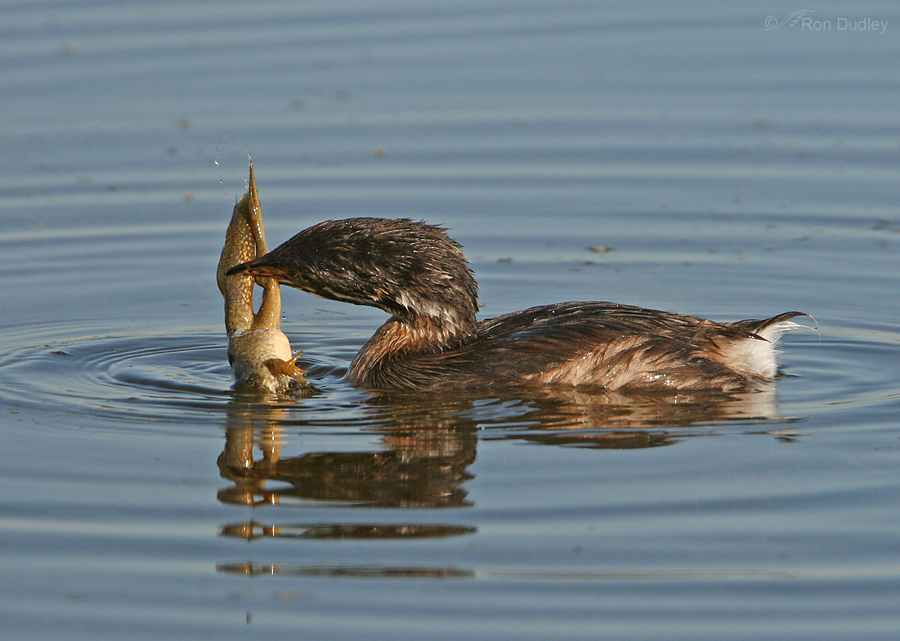
As you can see, the young frog hasn’t yet fully metamorphosed into an adult and retains the tadpole tail.
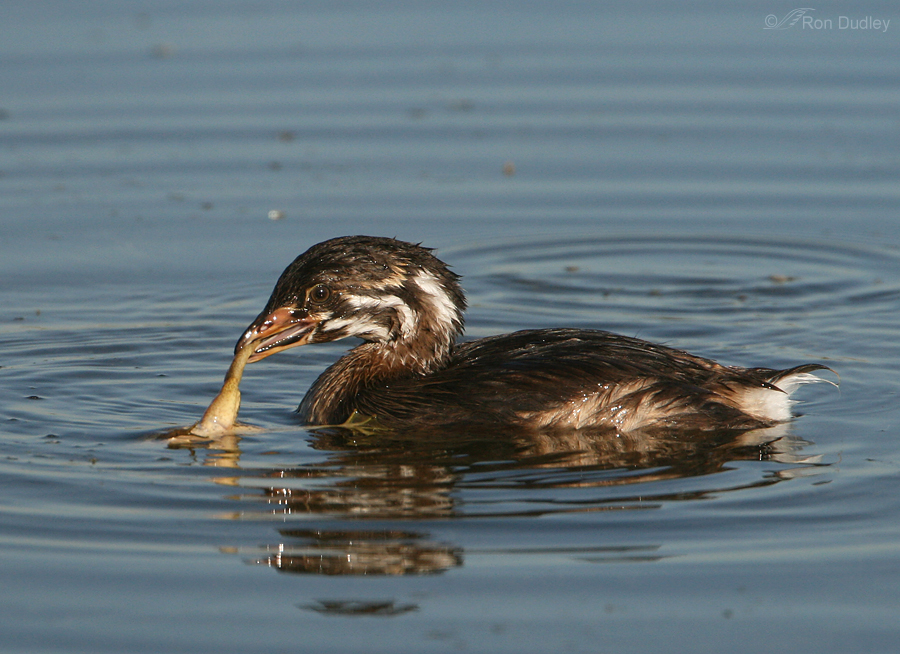
The grebe would repeatedly grasp a limb (it tried all 5 of them several times)…
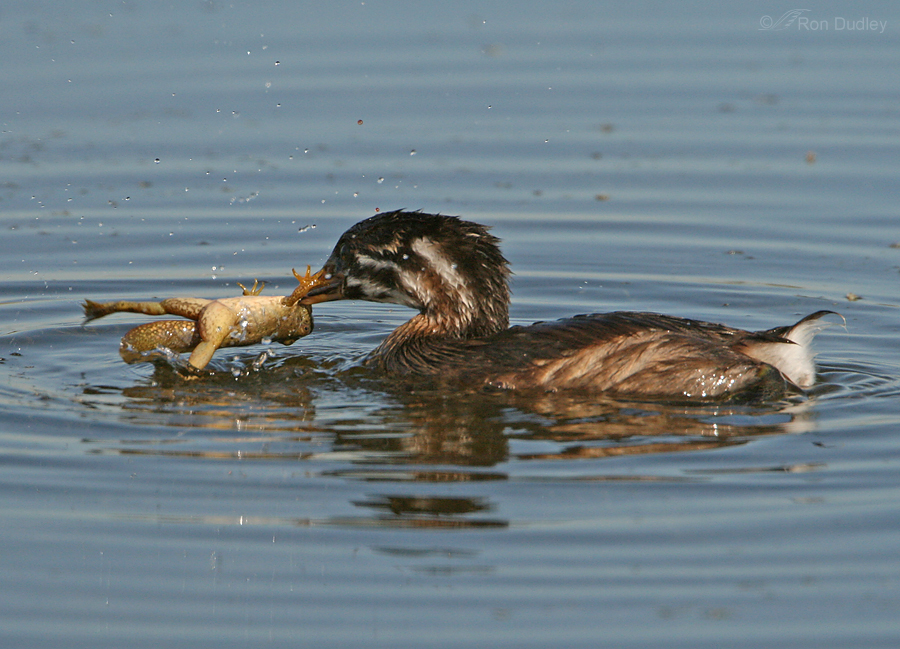
and then shake the frog violently in an apparent attempt to tear the appendage off like it has seen its parents do so many times before.
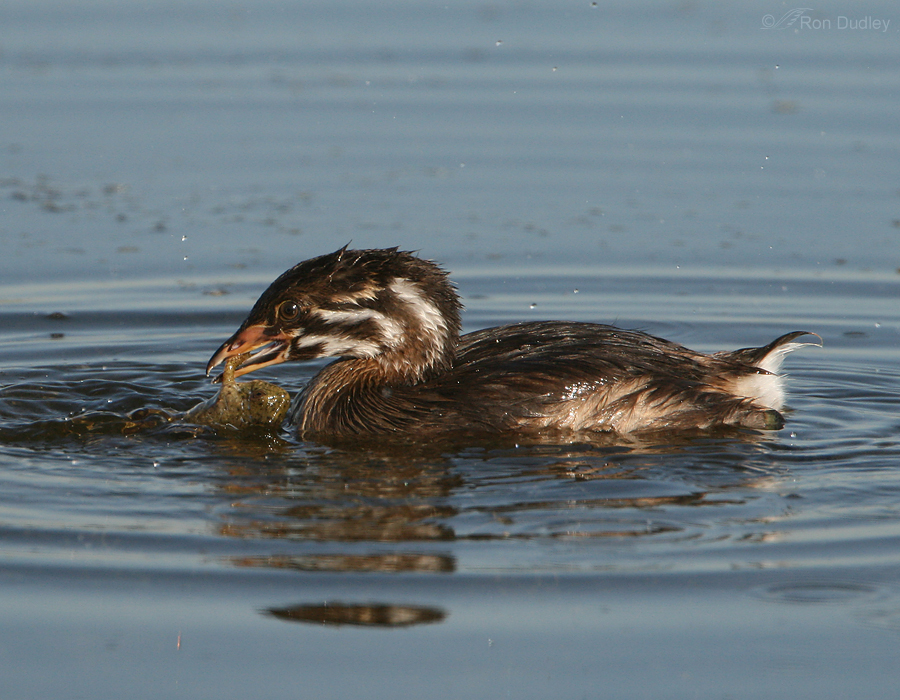
Here it’s working on the left front leg.
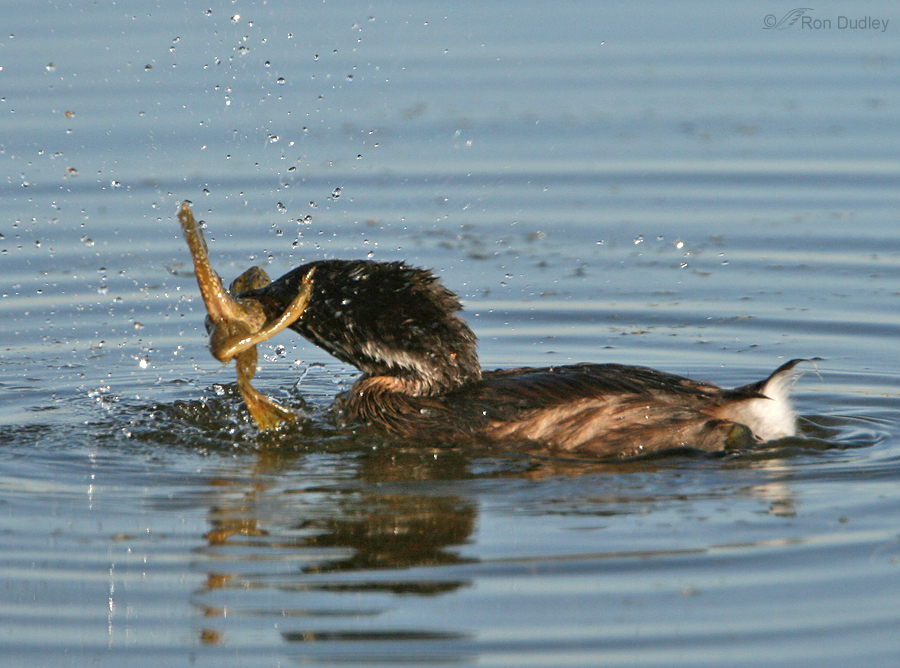
Other times the bird would grasp the body and shake. Hard!
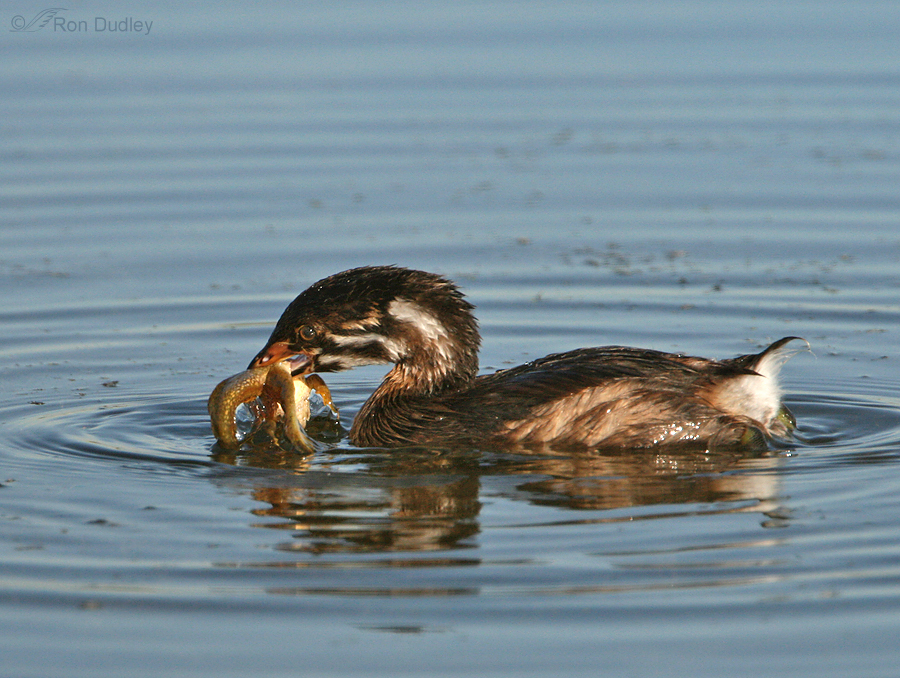
At times the grebe would appear to rest and “think” about its next strategy.
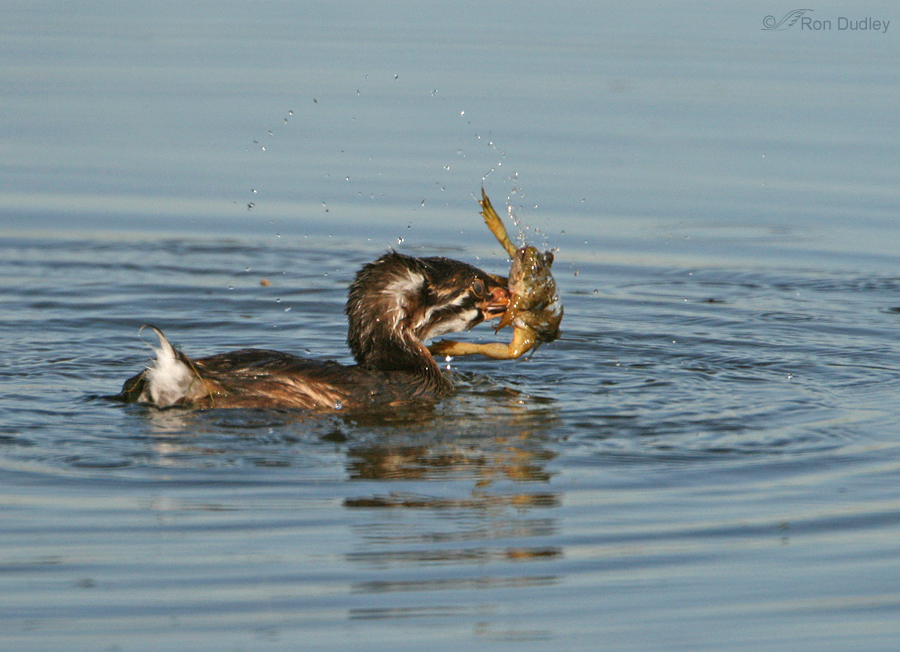
And then it would begin the violent shaking all over again.

The bird continued to shake the frog for just under 5 minutes (based on the image time stamps) with no success in tearing any limbs off…
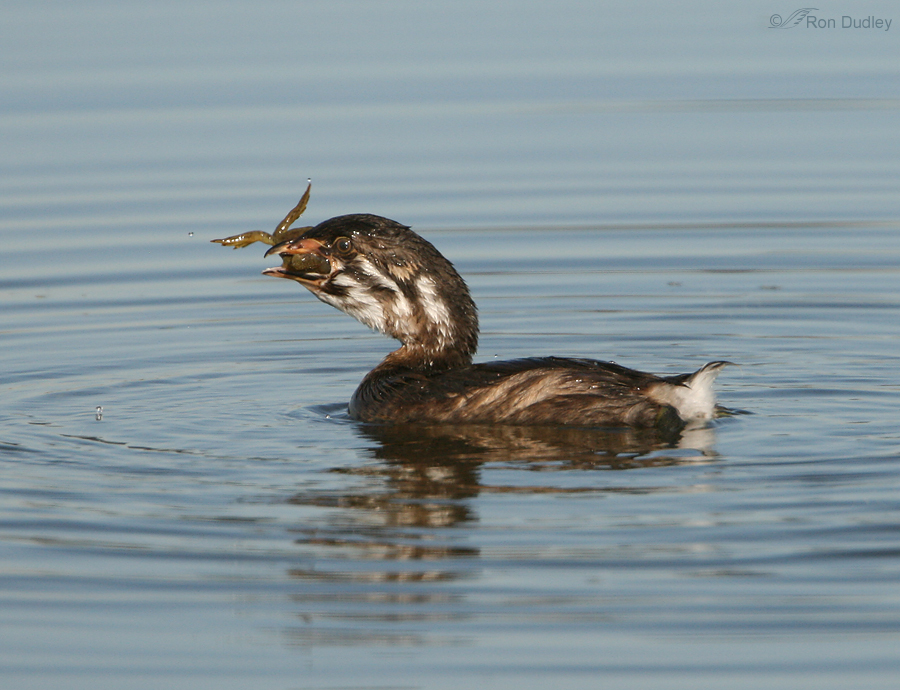
and then promptly and swiftly swallowed the frog on its first attempt…
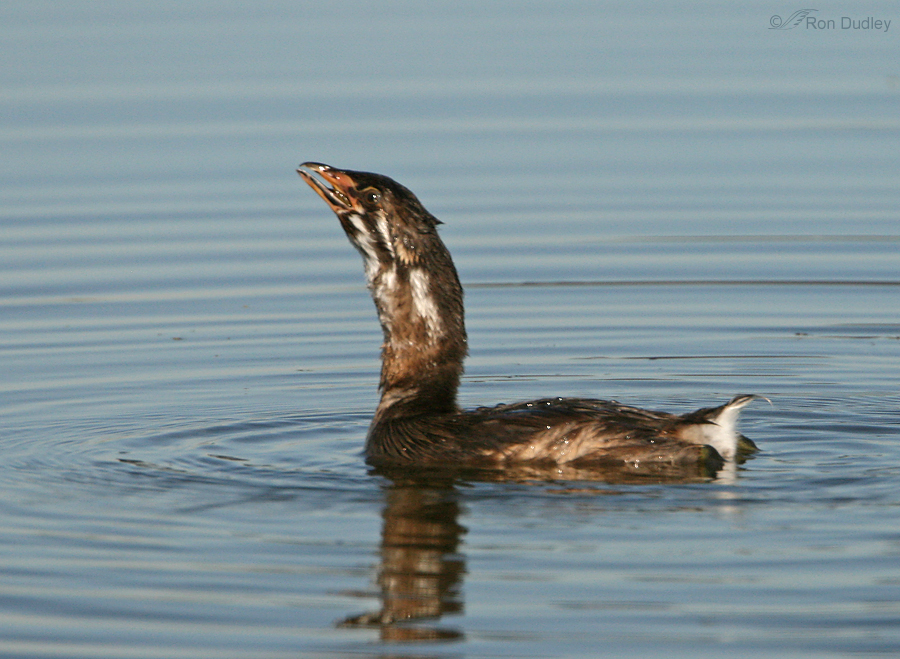
and had no trouble doing so. (image is a little soft but I wanted to show the last of the frog going down).
Of course I don’t know for sure what was really going on here. Why all the effort to dismember the frog when, in the end, it was swallowed so easily? Perhaps it was mimicking the behavior of the parents that it had seen before. Maybe at this young age it doesn’t yet know the limits of the size of the prey it can swallow? Perhaps it was instinctive behavior meant to increase experience in prey handling. Playing with its food? As far as I could tell the frog died almost immediately after capture so I don’t think it was an effort to kill the prey.
Whatever the real reason for the behavior it sure was interesting to watch and photograph.
Ron
Note: This series was shot when I was younger and dumber and still shooting in JPEG rather than RAW so my processing options were severely limited. Some of the shots were underexposed so I had to use the dreaded “shadow-highlight” tool and it shows.


I would have thought it too much to swallow as well! It’s amazing what they CAN swallow!
Very fine sequence Ron. It also stresses the drive in this juvenile to survive.
Amazing. And, for a frog that was very recently a tadpole, it was on the large size. Juvenile eating juvenile. Do the adults also shake and slam the frogs? If they do, I think it would support Mikal’s suggestion.
Good job of getting very sharp sequential images. They display one aspect of animal behavior beautifully. (Incidentally, down here in Cajun country, frog legs are considered great eating, even for humans.)
Hi Dwynn, Thanks but I do wish that last shot were sharper. I’ve heard that you folks down there like your frogs legs…
Fascinating sequence, Ron! How wonderful that you got to observe the Grebe working so methodically. In New Mexico, we watch Roadrunners doing something similar. They grab prey and forcefully slam it down onto the ground. Whack, thump, whack, whack. Speculation is that the process breaks connections or bones, to make the critter squishier and hence easier to swallow whole. The Grebe would have a harder time shaking in water. But perhaps it’s process loosens the joints, so those arms and legs slide down more compactly.
Thank you for your careful observations, your wonderful photography, and your generous sharing! I’m sure we all wish you a happy and productive new year!
Mikal
Thank you Mikal, for another possible explanation. Interesting stuff about the Roadrunner.
A great series of photos, Ron. Very exciting. BTW, I used to be younger and dumber, too, having shot JPEGS for a number of years, before I discovered RAW.
Thanks, Bob. I think I went about a year before I switched but I sure wish I’d done so sooner.